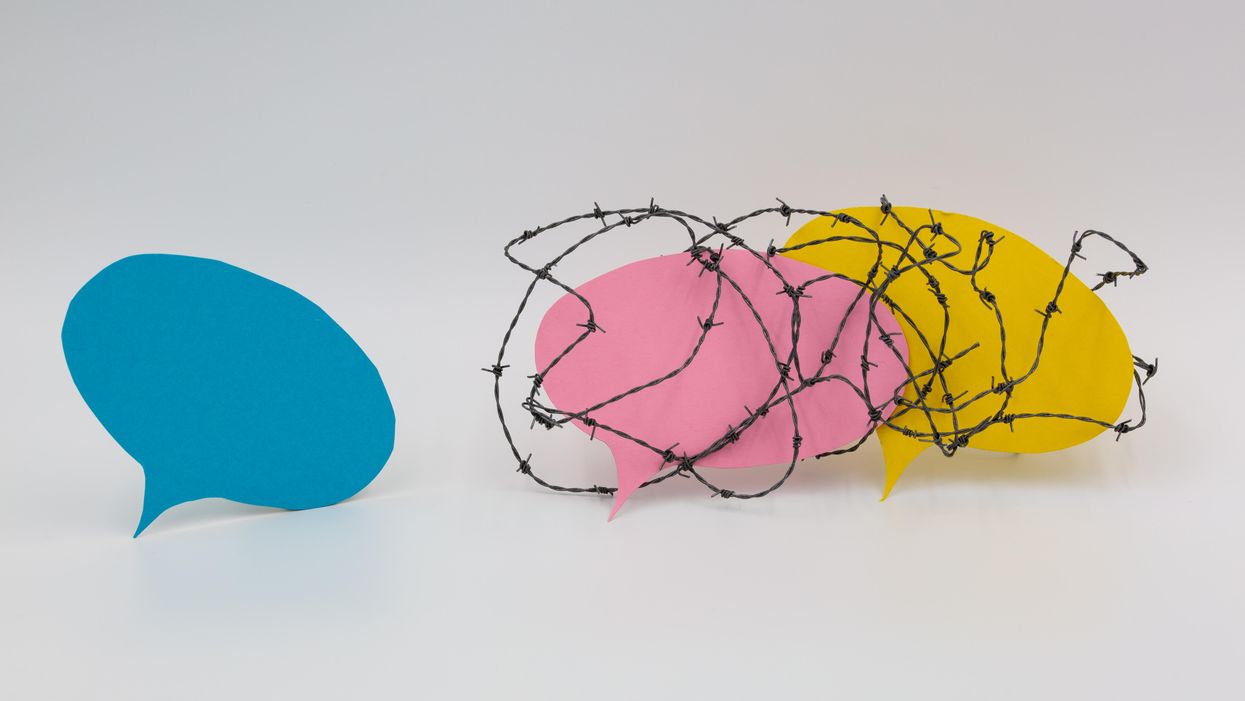Molineaux is co-publisher of The Fulcrum and president/CEO of the Bridge Alliance Education Fund.
Most of us don’t know what we think, really. Throughout our lives we encounter so many influential entities — from our family, our culture, our schools, by advertising, by the media — that we rarely have thoughts that are totally original. Most are variations of what we already know or have been conditioned to think and feel.
How might we learn which thoughts really belong to us, and which are thoughts planted by others? Which shared thoughts are helpful for social cohesion? Do we have curiosity to explore new thoughts, together?
Exploring the concept of thinking is called critical thinking. It may be our path out of the division and turbulence within the United States and lead us to a new social contract. Critical thinking, however, is no easy task. It requires exposure and openness to new ideas, followed by healthily dealing with the discomfort of our new thoughts.
As a result, we often hear calls for censorship because new ideas are considered dangerous. Unknowingly. the thought police are here; and it is us.
Our freedom of speech is paradoxically a tool for authoritarian mindsets to demand censorship. Broadly speaking, there are several main arenas where censorship and freedom of speech are currently debated. As you read the following, what are your thoughts? Do you find yourself celebrating one area of censorship while decrying it in another?
- Braver Angels (whose mission is to bridge divides and include everyone) hosted a podcast that was removed from YouTube after an interviewee repeated provably false information about Jan. 6, 2021, and the host gently corrected the facts in real time.
- At school board meetings around the country, parents are demanding books be banned for including content they don’t want their children exposed to.
- Spotify has an exclusive contract with Joe Rogan, a provocateur who regularly interviews people who have been de-platformed by social media companies. Spotify is refusing to deplatform Rogan, despite calls from other artists and subscribers to do so.
- Critical race theory began as a 1980s examination of whether the law was just and neutral, as everyone assumed it was. CRT has now become a shorthand or code for teaching our kids multiple perspectives of history. Which version(s) of history is taught is up for debate in state legislatures and school boards.
This last point about how we tell the story of our shared history has especially captured my attention because I have two friends who hold opposing views, which naturally challenges my own thinking.
One is a friend who saw a tweet claiming that "ethnic studies" was a cover or code for teaching CRT in California schools. She feels national pride is necessary for social cohesion and that CRT will cause students to be ashamed of our nation. In previous conversations, she shared with me her school and home experiences growing up in post-war Germany. When she would ask her mother about World War II, mother wouldn’t talk about it, presumably feeling ashamed. National pride was lost and my friend emigrated to Canada and then the United States, where she became a naturalized citizen.
My other friend is concerned about history being erased, and young minds being assimilated into the dominant culture, which would cut off people from their ancestral roots. He drew a similarity to the Babylonians, who attempted to erase the history of the Israelites, as chronicled in the book of Daniel. This friend is a Baptist minister, and discovering his ancestry has taken extra effort, due to our nation’s history of enslavement. His identity was not connected or represented in American history. His family was not included in the dominant culture, but have shared their stories within their communities that other Americans either don’t know or cannot resonate with.
This is the tension that leads to censorship in schools. A fear of shame about our past and/or anger at being left out of the story. An accurate representation of history gives us the opportunity to learn from the past mistakes of others. It helps us understand why people behaved as they did and why they may behave the way they do now, and which in turn helps future generations to become better citizens. This is why the full teaching of history will shape our future. It’s one element to build social cohesion.
It’s why we fight over censorship, too. Some people like to surround themselves with like-minded people and avoid challenges to their thinking. This is known more scientifically as confirmation bias. They short-hand and denigrate group-think in others with labels like “snowflakes” and “cult members,” recognizing tendencies in others but not themselves.
As we hear increasing calls for censorship, how might we engage to think more critically instead? And how might we come to understand that some of those uncomfortable thoughts can help us learn and grow? We need outliers.
Outliers were defined by Malcolm Gladwell when he chronicled people whose achievements fall outside normal experience, and are a fascinating and provocative blueprint for making the most of human potential. Outliers challenge our assumptions and point them out. Outliers can prevent group-think. Outliers are often mistaken as conflict entrepreneurs (or provocateurs) because of the discomfort they create while challenging the status quo as insufficient.
Whereas conflict entrepreneurs exploit our divisions as a way to profit, while claiming outlier status. How might we distinguish between them?
When exposed to an outlier, I will think or feel:
- “That’s interesting. I wonder if …”
- “Hmm. I never thought of that perspective before.”
- A week (or more) later, I’ll discover the need to research that new idea.
When exposed to a conflict entrepreneur, I will think or feel:
- “Those blankety-blank people need to …”
- “Why don’t they GET IT?”
- Triggered feelings of anger, fear, resentment and/or disgust.
You’ll notice that outliers invite curiosity, engaging in a way that allows us to find our own way to agree or dream with them. The exploration is the point. The conflict entrepreneurs speak with certainty and offer answers, so we can bypass the analysis of points of view, the judging based on evidence, and the forming of opinions based on deductive reasoning. This is the essence of critical thinking needed to build social cohesion.
I crave more critical thinking. More connection. More exploration. I don’t crave more censorship. What do you think?



















